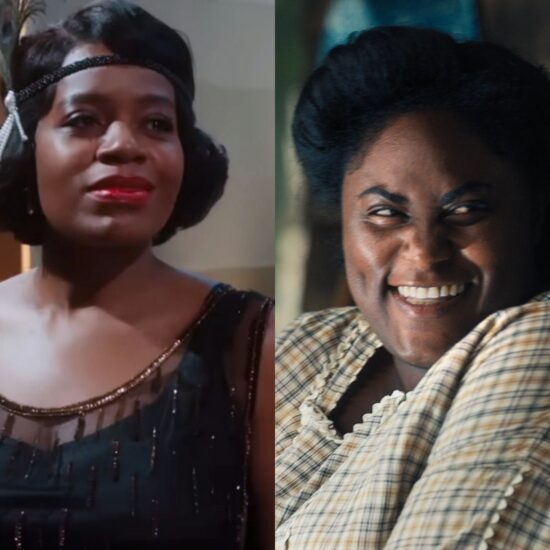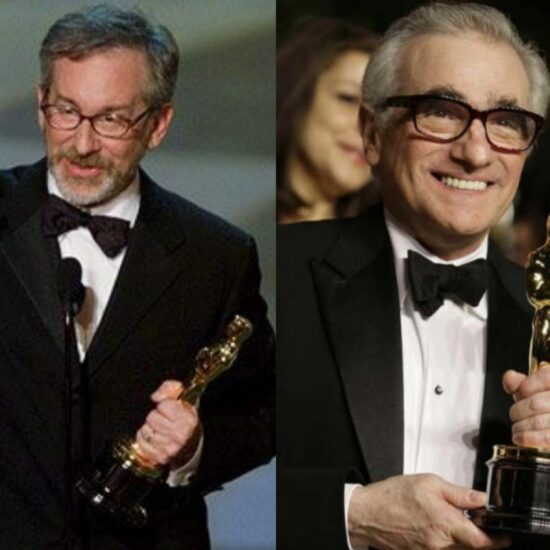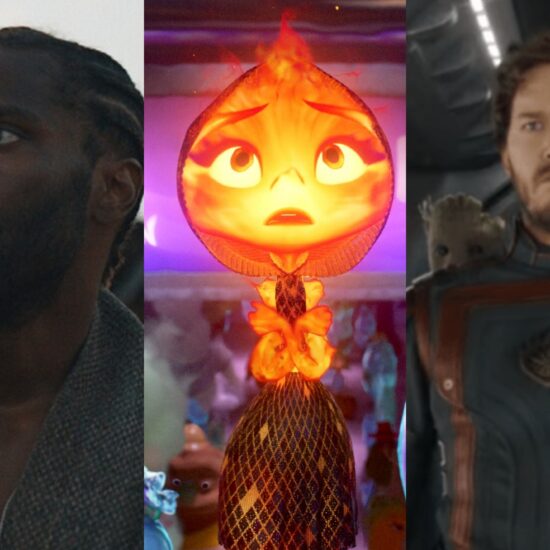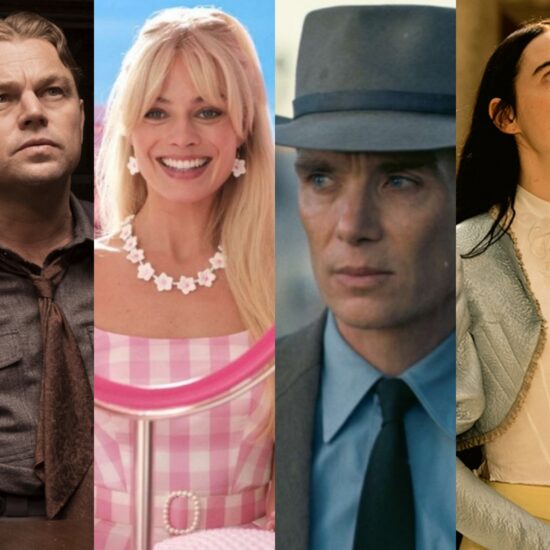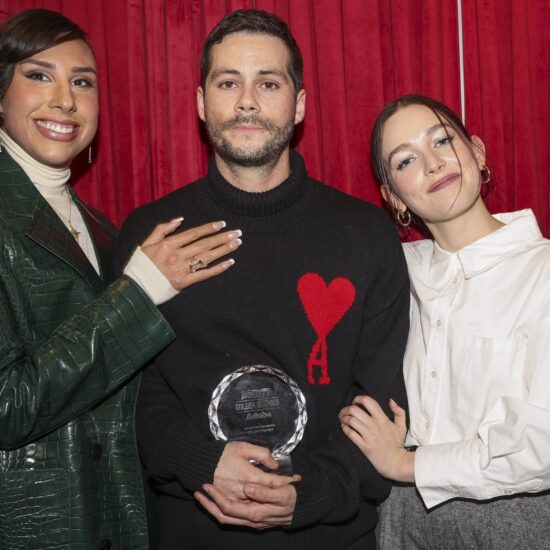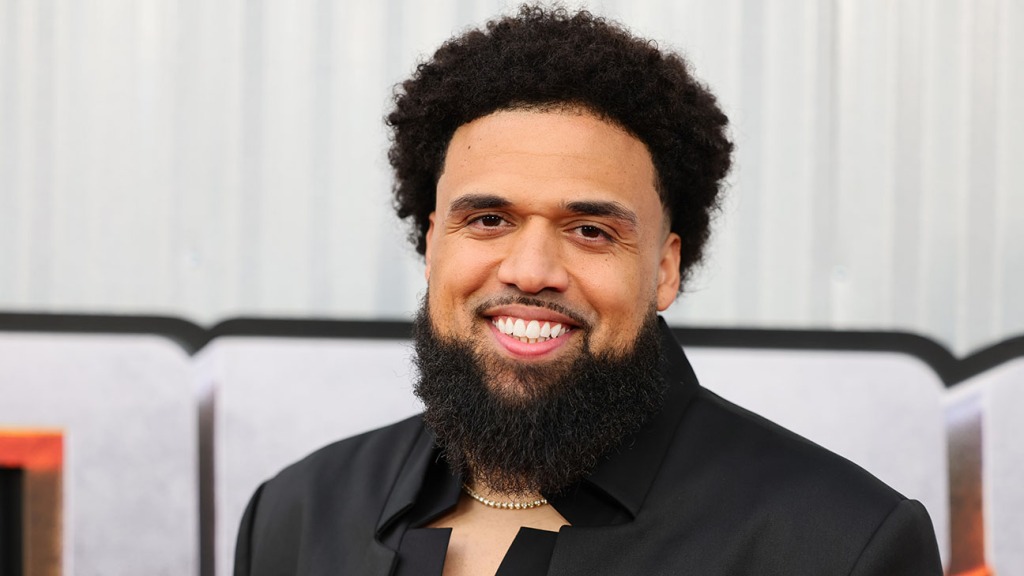
[This story contains spoilers for Transformers: Rise of the Beasts.]
Transformers: Rise of the Beasts director Steven Caple Jr. has now brought two intriguing what-if scenarios to fruition.
In 2018’s Creed II, Caple Jr. pitted the sons of Apollo Creed (Carl Weathers) and Ivan Drago (Dolph Lundgren) against each other, and while Adonis Creed (Michael B. Jordan) emerged the victor, the audience still felt sympathy for the Drago family, which seemed all but impossible in Rocky IV (1985). Shortly after the release of Creed II, Paramount talked to Caple Jr. about potentially helming a sequel to Travis Knight’s Bumblebee (2018), but the Ohio native didn’t want to follow up a direct sequel with another direct sequel.
A year or so later, Caple and Paramount resumed talks and agreed on a new take that was influenced by the Transformers: Beast Wars animated storyline, introducing animal-like Transformers known as the Maximals, the planet-eating big bad, Unicron, and his henchmen, the Terrorcons. But Caple didn’t stop there. He knew he needed a pièce de résistance that distinguished Rise of the Beasts from its six predecessors.
He then recalled a four-issue comic book series from 1987 called G.I. Joe and the Transformers, and so he pitched the franchise crossover to his producers, who loved the idea so much that they suggested he take the “ask forgiveness, not permission” approach.
“[Producer Lorenzo di Bonaventura] was like, ‘Maybe you don’t pitch it to the studio. Maybe you just write it in the script and go for it. Let them read your draft of the film and see how they react.’ And that’s what we did,” Caple Jr. tells The Hollywood Reporter.
Ultimately, Paramount loved the idea of Rise of the Beasts ending with Anthony Ramos’ Noah Diaz being offered a job with the Joes, but the process went slowly given all the parties involved.
“The studio reacted positively, and they were just like, ‘Well, how do we do this? How do we make this happen?’” Caple shares. “Paramount didn’t know there was a crossover graphic novel, but Hasbro did. And so it just took time. It took almost two years to go through the whole system and talk to everybody and get a feel.”
Transformers: Rise of the Beasts takes place in 1994, seven years after Bumblebee, and one of the big questions going into the new film was how it would address the beloved relationship between Hailee Steinfeld’s Charlie Watson and Bumblebee. At the end of the day, Bumblebee only indirectly references Charlie, but a more direct moment did in fact hit the cutting room floor.
“We went even further with it where Bumblebee actually took out the Polaroid photo of him and Hailee’s character in Bumblebee,” Caple explains. “She took a selfie of the two of them together, with a Polaroid [camera], and so we actually shot that version. We probably have it in the deleted scenes; I’m sure we do. Bumblebee showed the photo [to Prime], and he was further pushing how tight he was with a human. I like Hailee Steinfeld. I have not met her, but the way our movie ends, there’s always possibilities.”
Caple is also opening up about his film’s test screenings and how they influenced the ending of the film, as it was originally much darker than the triumphant version that exists now.
“There was a version of the film where [Optimus] Prime went up into space. I think you guys are gonna see this in the deleted cuts, too, but when he actually destroyed the [Transwarp] Key, he got sucked up into the portal and ended up with Unicron. And then there was also a moment where Mirage [Pete Davidson] didn’t come back,” Caple says.
Caple adds: “I personally thought that movie was good; we were still getting pretty good ratings around that, but something was missing. And when I realized there wasn’t an applause or a cheer at the victory [during test screenings], it just felt a little down. So we wanted to see the heroes win … because it just felt a little sad.”
Below, during a recent spoiler conversation with THR, Caple also looks back on the Drago material he cut from Creed II, including a fight between Sylvester Stallone’s Rocky Balboa and Dolph Lundgren’s Ivan Drago.
Well, let’s cut to the chase. All the Sonic the Hedgehog references led me to wonder if a crossover was being set up, but as it turned out, I just had the wrong franchise. How on earth did this G.I. Joe crossover go down?
(Laughs.) The Sonic thing is hilarious. I haven’t gotten that one yet. So, in the beginning, I got the script, and I started developing Noah’s [Anthony Ramos] storyline. If you remember from the film, he was having trouble getting a job, and part of the reason was because of his military background. So, by the end of the film, I thought it would be interesting if he actually does get a job and his brother’s healthcare gets taken care of. But I wanted it to be a military organization and/or the government, and when doing so, the idea of Sector Seven and these other operations just didn’t really have enough weight.
And then I thought about this comic book series that was done a while ago [1987]. It was a four-issue limited edition, and it was a crossover between G.I. Joe and Transformers. And so I presented it to Lorenzo [di Bonaventura] first, the producer, and then [producer] Mark Vahradian. So those guys were the first ones to hear my pitch. I had already pitched a whole film to the studio, but this was new. And so I just saw the sparkle in Lorenzo’s eyes. He was really excited about it. He was like, “This could be crazy. This is good. I dig this.” He’s heard about it before, but never tried it. And he was like, “Maybe you don’t pitch it to the studio. Maybe you just write it in the script and go for it. Let them read your draft of the film and see how they react.” And that’s what we did.
And then the studio reacted positively, and they were just like, “Well, how do we do this? How do we make this happen?” Paramount didn’t know there was a crossover graphic novel, but Hasbro did. And so it just took time. It took almost two years to go through the whole system and talk to everybody and get a feel. I had to talk to all the producers and let them know the vision or direction I was going in. I didn’t know all of it at the moment when I had first pitched it or when they first read it, but throughout the process of making this movie, it started to get deeper and deeper. So I knew a little bit more of the direction I wanted to go in with the Joes, but the studio was on board since the beginning. It just took a while to get all the parties on board and settled.
Director Steven Caple Jr. on the set of Transformers: Rise of the Beasts
Courtesy of Jonathan Wenk
This is obviously a seismic decision to make, so did everyone have to develop a tentative short-term or long-term plan for how to tackle this going forward?
Yeah, it was figuring out a way to use the G.I. Joe technology because they’re known for their tech. I was like, “Maybe we don’t have to go through the classic characters like Snake Eyes and Duke and all these other characters. Maybe there’s a way we can use other characters that haven’t been utilized as much.” There’s different series and editions and different factions of G.I. Joe as well. There’s G.I. Joe: Renegades and different branches of it, too. So I started to play with that, and I pitched versions of it to the studio and the producers. I pitched a direction I wanted to go in and ways to branch out the universe in general. Transformers movies have scope and size, but we’ve been spending a lot of time here on Earth, so I just think there’s more out there. Even in the graphic novels for Transformers, there’s other planets and things like that, and I was like, “We’re just thinking too small.” So, if we’re going to do movie number eight and nine and ten, maybe there’s a way to make this all more expansive and branch out.
The scene honestly bummed me out at first because Noah had to save the planet from a planet-eating robot in order for his brother to get healthcare from a shadowy special ops program. His situation wasn’t too far off from real life.
A hundred percent. It’s also part of the reason why I wanted the Joes to be involved because the Joes would have nothing to do with Noah’s dilemma. That probably would’ve been the regular military, not necessarily G.I. Joe. They’re a separate entity. And thematically, that was something I wanted to do from the beginning of the film. But yeah, you’re right. Unfortunately, that’s what it took, but the whole zero-to-hero theme was my intent from the beginning, especially with having Anthony Ramos, a Puerto Rican lead. Even Dominique Fishback has a glass ceiling at work and all these issues that she was dealing with. So I really wanted to hit that hard, especially for a Transformers film that everybody gets to see around the world.
While making the movie, you could even see the differences on set. We shot some of this movie in Montreal, and there were people in Montreal that didn’t understand the hospital scene because they have free healthcare. When I was casting actors from Canada, they were like, “What is going on? This happens?” And I was like, “Yeah, this is a real-life scenario. This can happen to any of us back at home. It happened in 1994 and it happens today.” So they were just tripped out, and to have that kind of reaction to a Transformers movie was kind of crazy. They were watching Anthony’s performance with his character’s little brother [Dean Scott Vazquez], and they were like, “My heart is broken. This is really sad.” And I was like, “Yeah, it is.” So it’s some commentary within the film, and the fact that we had the opportunity to do so was important.

Bumblebee in Transformers: Rise of the Beasts
So, don’t get me wrong, Bumblebee’s “Don’t Call It a Comeback” moment made it all worthwhile, but sidelining the title character of the last movie for most of the film, was that a controversial choice among the powers that be? Was there some pushback?
There wasn’t pushback, but everyone was nervous. Bumblebee just had his movie, and I wanted to really dive deeper into Optimus Prime [Peter Cullen]. And so the root of that scenario came from Optimus Prime being a different Prime. He’s clapping back at Noah and the humans, and they’re not on the same page. But what else could throw him off a bit? And it was like, “Well, he could be hurt about Cybertron and the Autobots there, but what if we had Bumblebee get hurt and/or die, at least in the beginning of the film? He’s really gonna want revenge. He’s not gonna care what anybody in the group says.” So it gave us permission to go darker with Optimus Prime in a way, because now he felt this burden and that it was his fault. And so the last person you’d expect to sacrifice anything for humans would be Optimus Prime, at least in this particular film, and it just helped that Bumblebee had died at the hands of Scourge [Peter Dinklage].
And to be honest with you, [Bumblebee’s death] made room for other characters. We knew we were gonna meet the Maximals later on in the film, and I really wanted to give a voice to one particular Autobot, Mirage [Pete Davidson]. I wanted to give him a personality within his franchise and implement a little bit of me in this franchise. I’ve never dabbled in comedy before, and so I wanted to find the right tone. And Pete Davidson felt fresh. I wanted to give him the stage a bit to actually shine, and it’s always hard when you’ve got somebody like Bumblebee who’s a winner, man. He steals the show. He’s one of my favorite characters, for sure, but [his death] just allowed us to make room for someone like Mirage. It allowed me to make a film that stands out from the rest, and it meant we could have a great comeback at the end with LL Cool J and Bumblebee’s arrival.
I spoke to Hailee Steinfeld recently, and because she often keeps her cards close to her vest, I did wonder if she was maybe going to cameo. Even during the movie, I kept imagining a moment where another Transformer transmits a message from Hailee’s character to help wake Bumblebee back up for that LL Cool J moment. So was Hailee ever in the cards?
She was, but not necessarily for Bumblebee’s comeback. I think we still have this line in the movie, maybe we don’t, but there’s a moment where Bumblebee says to Prime, “They are my friends.” And he’s talking about Hailee’s character.
Yeah, Prime responds with something like, “I know one was good to you, Bee.”
Exactly. So they had that conversation, but we went even further with it where Bumblebee actually took out the Polaroid photo of him and Hailee’s character in Bumblebee. She took a selfie of the two of them together, with a Polaroid [camera], and so we actually shot that version. We probably have it in the deleted scenes; I’m sure we do. Bumblebee showed the photo [to Prime], and he was further pushing how tight he was with a human. But yeah, I like Hailee Steinfeld. She’s a great actress. I have not met her, but the way our movie ends, there’s always possibilities. Maybe she’s too busy in the Marvel world, but she’s a wonderful actress and I would definitely love to collaborate with her.

Steven Caple Jr. on the set of Transformers: Rise of the Beasts
Courtesy of Jonathan Wenk
The studio originally raised the idea of you doing a Bumblebee sequel. Did anything from that project make its way to this project?
No, actually. When they first talked to me about Bumblebee, they didn’t have a script yet, and it was right after the movie opened. Creed II opened a month before Bumblebee. We did Thanksgiving, and they did Christmas. And so I met with Paramount around January or February [2019], and we talked about a Bumblebee sequel because fans reacted in a positive way. They liked the intimacy and how it was much smaller and simpler, but they wanted to make a sequel that was bigger. But I just wasn’t interested in a Bumblebee 2 after coming off of Creed II, and I just wasn’t sure if I wanted to track Bumblebee for another journey. I also wasn’t sure if that meant other Autobots would be brought in, and they weren’t sure either. So I didn’t do it, but I can’t say I passed because it wasn’t an offer. It was more like a discussion.
And then, in 2020, I got another call and they said, “We’re introducing the Beast Wars and Maximals.” And so that’s what took it to another level. I was like, “Oh, now that’s interesting.” And they said, “We’re still gonna keep the Autobots.” So I had a chance to work with the Autobots and also introduce the Beast Wars, and it just felt like more of a fresh perspective. We still take place after Bumblebee, so technically, on paper, it looks like a sequel. But we’re just taking a Star Wars approach, where we’re jumping around through time.

Anthony Ramos and Tobe Nwigwe in Transformers: Rise of the Beasts
Courtesy of Jonathan Wenk
So I have a theory about the mid-credit scene. I think people liked the Reek (Tobe Nwigwe) character so much during test screenings that they wanted more of him, resulting in the mid-credit scene with him, his Twizzler and Noah fixing Mirage. Are my instincts remotely correct?
(Laughs.) Yes, that is correct, man. Tobe’s character, Reek, just stood out, and I knew it on set. There was definitely a time where I wanted him to go on the journey to Peru and everything, but I didn’t want to step on what we were cooking up with Elena [Fishback], because it’s so cool. So we cleared the space, but yeah, people loved Tobe’s role as Reek.
There was also a moment where Mirage didn’t come back at the end, and to be totally honest with you, I just combined the two. After the test screening, I pitched it to the studio. I was like, “What if we just have Mirage come back? We don’t want to kill him off, and we can have Reek introduce him. He’s a fun character. We can have this scene in a chop shop where he’s apologizing for the whole police thing and all of that.” And the studio loved it, so we went with it. It was a crowd-pleaser, for sure.
What else did you learn during test screenings that you ultimately accounted for in the final cut?
There were a few things I learned, but one major one was that after 2020, people definitely wanted happier endings. I wanted to do something more uplifting, but I also had a darker version of this film. There was a version of the film where Prime went up into space. I think you guys are gonna see this in the deleted cuts, too, but when he actually destroyed the [Transwarp] Key, he got sucked up into the portal and ended up with Unicron. And then there was also a moment where Mirage didn’t come back. So I personally thought that movie was good; we were still getting pretty good ratings around that, but something was missing. And when I realized there wasn’t an applause or a cheer at the victory, it just felt a little down. So we wanted to see the heroes win: Optimus Prime, Noah, Elena. And so I went back and made sure that we had these victories throughout because it just felt a little sad. And overall, you find out what jokes land and what jokes don’t. It’s always tough because it’s a different crowd each time. Some people laugh at the Marky Mark joke, but then some people don’t. So you never know with the audience, but for a movie that’s going to be seen all over the world, I wanted there to be something for everybody. So we just kept that idea alive throughout, and the test screenings really helped with that.
Did it take quite a while to land on the right look for Noah in Mirage mode?
Yeah, that was probably one of the longest things. Optimus Primal [Ron Perlman], Mirage’s look, as a vehicle and also as a robot, and then Noah’s exosuit took the longest. We couldn’t get to Noah’s exosuit unless we knew Mirage’s look, and so that took quite a bit. Once we got the look, we just kept picking at the exosuit, which was really tough to make. So design-wise, it was pretty difficult, but the tough part was making sure that the pieces and panels could actually transform and that he would actually be able to wear it all. He wasn’t putting on the suit in real life, but it would still have to look like he actually does have it on. So there were layers to it and gaps in between the suit that allow for a real-life transformation, if you will. I wanted to stay true to the fact that we haven’t seen an exosuit that’s fully made out of car parts. So you still see the headlights and some cylinders and some car parts in the suit, and it was important that we got that right. So I feel like it looks really cool, and it pays homage to Noah and Mirage’s relationship. We turned a human into a Transformer, which has never been done before, at least in live-action.
Lastly, in light of Dolph Lundgren’s health situation and our two chats, I rewatched Creed II, and I was reminded of how affecting the Drago family story is. They also had some additional material hit the cutting room floor, like the hospital fight and some other character moments. Were those painful cuts to make?
Well, there were some moments with the Dragos that were [painful to cut]. There’s a moment where they’re running, and Ivan [Lundgren] yells at Viktor [Florian Munteanu] to run faster. There was a little bit more of the ending fight, and you started to feel for the Dragos a bit more. That one hurt a little bit, because it felt more bittersweet at the end of it. But it also didn’t feel like a Rocky movie fully, meaning Rocky can lose against Apollo Creed in Rocky, and it was still satisfying to the audience because he went toe to toe with Apollo Creed for 15 rounds. And so, in Creed II, when we had the [original] ending, you started to feel Drago’s side more, and people just didn’t know how to feel. They’re trying to root for Creed, but they also felt for Drago. And so that was probably one of the more gut-wrenching cuts. We just took out little moments that Viktor had with his dad and with Adonis, because it just didn’t feel like a full victory for Creed. And so that’s what hurt the most, not necessarily the fight with Rocky and Ivan at the hospital.
For that, there were a few things. It was making sure that the choreography was right and that it felt truly motivated. If we were to release that for the fans, the movie still would’ve been good. It wouldn’t have affected the movie in a huge, huge way, but all it was doing was painting an even darker light on the Dragos, which I wasn’t sure we even needed at that moment because you kind of hated the Dragos after that middle fight with Adonis and Viktor. So we took it out, because it just felt like a fight right after a fight, if that makes any sense. I wasn’t hurt, but it sucked to take it out. There was a conversation with the studio, and in defense of the studio, they weren’t even pushing to take it out. We were all looking at it and we were like, “Ah, it’s kind of messing up the flow.” So we loved leaving the hospital with Rocky feeling hurt, because he felt like he let Adonis down. It just felt so good that way. The Rocky-Ivan Drago fight felt like we were hopping into a slightly more action-based movie. We were feeding into that Rocky V tone a little bit, and we were like, “Maybe we should just peel back.”
***
Transformers: Rise of the Beasts is now playing in movie theaters. This interview was edited for length and clarity.










